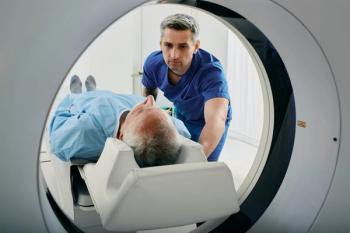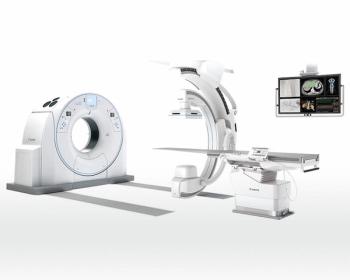
Declining open MR marketplace maintains opportunities for high-performance scanners
Major vendors agree that there will always be a place, at least in the U.S., for open MR devices. That place, however, has been steadily shrinking for general-purpose scanners, as imaging centers and hospitals focusing on patient-friendly scanning have had to look for ways to increase productivity and offer advanced applications. Options have come in the form of wide-aperture, short-bore magnets. Over the past few months buyers in this space have been presented with two other choices: Siemens’ 1.5T Espree and Philips’ Panorama 1.0T.
Major vendors agree that there will always be a place, at least in the U.S., for open MR devices. That place, however, has been steadily shrinking for general-purpose scanners, as imaging centers and hospitals focusing on patient-friendly scanning have had to look for ways to increase productivity and offer advanced applications. Options have come in the form of wide-aperture, short-bore magnets. Over the past few months buyers in this space have been presented with two other choices: Siemens' 1.5T Espree and Philips' Panorama 1.0T.
The two companies were talking up their offerings in Miami last week at the meeting of the International Society for Magnetic Resonance in Medicine. Espree proponents focused on the drivers of open MR rather than the literal interpretation of this technology, directing attention to the industry's shortest bore and widest aperture as evidence that the 1.5T system can create a patient-friendly environment.
"Looking at this marketplace is what caused us to develop the Espree, to make something that is open and gives customers what they have been missing: applications and throughput," said Nancy Gillen, vice president of Siemens' MR division.
Gillen and her Siemens colleagues are trying to redefine the concept of open MR to include the cylindrical design of their new scanner. She referred to a panel of experts at a low- and midfield open symposium in regard to this definition.
"They were asked, 'What is open?'," she said. "And they said unanimously, 'What the patient will accept.'"
Philips is taking the argument one step further, offering high-field scanning while staying within the literal definition of open MR. The clam-shaped over-and-under design of the Panorama 1.0T affords a truly open environment, along with the pulse sequences and throughput that users of 1.5T systems have come to expect, according to Jacques Coumans, Philips' vice president of global MR marketing. Interest in the high-field open system has been encouraging.
The first Espree and Panorama 1.0T scanners were installed in 2004. The Espree has pulled ahead in the number of installations. Siemens had installed more than a dozen Espree units worldwide by early May, whereas Philips was finishing up only its second and third installations of the Panorama 1.0T. Both companies, however, have enough experience with production that they believe no traps or pitfalls lie ahead.
Siemens has taken orders for more than 120 Espree systems, according to Gillen. While not providing a specific number of orders for Philips' open 1T unit, Coumans describes traffic at its sole operating site in Las Vegas as "incredible" and expects to install between 25 and 50 units by year's end.
Because of its conventional cylindrical design, Espree presents fewer engineering challenges than Philips' high-field open system. Those challenges were among the issues that led Siemens to drop development of a truly open 1T scanner in favor of the Espree, but Philips appears to have overcome them.
Coumans reports that the issues encountered in taking the 1T open prototype to production involved neither the magnet nor its gradients. Rather, they centered on relatively mundane technologies dealing with Philips' decision to offer a dockable table.
The idea was for sites to buy two such tables. While one was docked to the scanner, the second would be used to prepare the next patient. This necessitated not only mechanical but electronic connections. This led to some problems that might have been avoided if Philips had correctly assessed the marketplace.
"It seems the institutions interested in these units do not necessarily want to have docking couches," Coumans said. "They don't want to prepare patients outside (the MR suite). So maybe we overengineered that part of the system."
Regardless, the docking glitches have now been worked out, he said, and Philips is ready to ramp up production. Near-term production will be limited, however, to ensure that the coils needed to capitalize on the 1T architecture are available. These coils are being made at Philips' manufacturing plant in Helsinki. The same plant makes coils for Philips 0.23T and 0.6T open scanners.
Another reason for Philips' decision to limit production was to ensure that demand would materialize. The open market has been steadily declining since the late 1990s, despite the introduction of higher field 0.7T systems. Philips strategists initially were unsure of how the market would greet its 1T open. Those concerns have dissipated.
"The market is responding well. I think we were a little too pessimistic in what we asked our magnet supplier to produce this year," Coumans said.
In the near term, demand for the Panorama 1.0T will be driven by patient comfort. In the future, extended demand may come from advanced applications, particularly those related to intervention, he said.
Newsletter
Stay at the forefront of radiology with the Diagnostic Imaging newsletter, delivering the latest news, clinical insights, and imaging advancements for today’s radiologists.



























